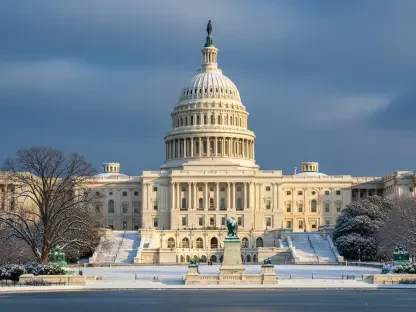In a startling turn of events, recent federal budget cuts in the United States have stripped funding from public media, directly threatening the backbone of emergency alert systems that millions rely on during crises. This dramatic defunding, particularly impacting the Corporation for Public Broadcasting (CPB), raises alarms about the nation’s preparedness for natural disasters and other emergencies at a time when such events are becoming more frequent and severe. Public media has long served as a lifeline for communities, broadcasting critical warnings that save lives, yet its future hangs in the balance. This analysis delves into the specifics of these funding cuts, explores their profound implications for public safety, amplifies voices from key stakeholders, projects potential future scenarios, and underscores essential takeaways for safeguarding this vital resource.
The Current State of Public Media Funding
Federal Cuts and the End of Key Programs
A Republican-led rescissions package, signed into law in July of this year, has delivered a severe blow to public media by eliminating federal support for the CPB, with its closure set for October 1 of the current year. This decision halts all financial backing that has sustained public radio and television stations nationwide, marking a historic rollback of government investment in community broadcasting. The immediate consequence is the termination of crucial initiatives that depended on this funding to operate effectively across diverse regions.
Among the most significant losses is the Next Generation Warning System (NGWS) Grant Program, which, since its inception, has been allocated $136 million to enhance emergency alert capabilities. In its initial funding round, 44 stations received grants totaling $21.6 million, while a subsequent round saw overwhelming demand with 175 stations requesting over $110 million, highlighting the program’s critical role and widespread need. Official CPB announcements have confirmed the abrupt end of this initiative, painting a grim picture of the funding crisis now facing public media outlets.
The scale of this financial withdrawal cannot be overstated, as it disrupts long-standing mechanisms designed to protect public welfare. Reports from credible sources within the industry emphasize that without federal support, many stations are left scrambling to find alternative resources, a challenge that could prove insurmountable for some in the short term. This marks a pivotal shift in how public media operates, raising urgent questions about sustainability and reach.
Real-World Impacts on Local Stations
The defunding of the NGWS program directly undermines the ability of local public media stations to maintain and upgrade their Emergency Alert Systems (EAS), leaving critical infrastructure outdated and ineffective. Many stations, especially those with limited budgets, face the daunting task of replacing aging equipment without the necessary financial backing, a situation that compromises their ability to deliver timely warnings during emergencies. This gap in resources threatens to silence vital communication channels when they are needed most.
Past successes of the NGWS program illustrate what is at stake, with notable partnerships that have saved lives. For instance, collaboration with the California Governor’s Office of Emergency Services drastically reduced earthquake warning times, while Tennessee established a statewide emergency network to streamline crisis communications. Similarly, stations in Florida and South Carolina have provided real-time severe weather updates, guiding communities through dangerous conditions. These examples underscore the tangible benefits now jeopardized by the funding cuts.
Particularly vulnerable are rural and Tribal communities, where public media often serves as the sole reliable source of emergency information. The loss of federal grants exacerbates existing disparities, as these areas lack the alternative infrastructure to fill the void left by diminished broadcast capabilities. This disproportionate impact highlights a deepening divide in access to life-saving alerts, placing underserved populations at greater risk during disasters.
Voices from the Field: Stakeholder Perspectives
The response from key figures in politics and public media reveals a unified front of concern over the recent funding cuts. Democratic Senator Patty Murray has sharply criticized the rescissions, arguing that they contradict prior assurances that emergency alert systems would remain untouched. Her stance frames the cuts as a direct threat to public safety, pointing to the potential for widespread consequences as stations struggle to maintain operations under financial strain.
Echoing this sentiment, CPB President and CEO Patricia Harrison has voiced deep disappointment over the defunding, emphasizing its harmful impact on local stations’ capacity to support community safety. Harrison’s perspective sheds light on the grassroots level, where stations are integral to preparedness efforts, often acting as the first line of communication in times of crisis. Her comments reflect a broader anxiety about the erosion of trusted public resources.
Kate Riley, President and CEO of America’s Public Television Stations, has described the cuts as “devastating,” detailing immediate repercussions such as staff reductions, curtailed services, and diminished emergency alert coverage. Riley’s insights paint a stark picture of an industry forced to scale back at a time when its role is more critical than ever. Together, these voices reinforce the urgency of addressing the funding shortfall, highlighting the consensus that public media’s life-saving contributions are at risk.
Looking Ahead: The Future of Public Media and Safety
With the CPB slated for closure in October of this year, speculation abounds regarding the next steps for public media and emergency communications. One potential development involves transferring remaining NGWS funds to FEMA for disbursement, though uncertainties persist about the feasibility and timing of such a move. This proposed shift offers a glimmer of hope, yet it remains unclear whether it can adequately address the immediate needs of struggling stations.
Broader implications loom large, as the risk of station shutdowns and reduced coverage threatens to erode public trust in emergency communication systems. Without reliable alerts, communities may find themselves unprepared for disasters, particularly in underserved regions where alternatives are scarce. This potential decline in service could reshape perceptions of public media, diminishing its longstanding role as a cornerstone of community resilience.
While negative outcomes seem likely, there are also possibilities for positive change, such as the emergence of alternative funding sources or innovative partnerships with private entities. However, these solutions face significant hurdles, and without swift action, the trend of reduced capacity may exacerbate vulnerabilities during crises. Across industries, the ripple effects of these funding challenges could redefine public media’s influence, potentially weakening its position as a vital public service.
Key Insights and Call to Action
The defunding of the CPB and the termination of the NGWS program represent a critical turning point, posing a direct threat to emergency alert systems nationwide. This financial setback has endangered public safety, particularly for vulnerable rural and Tribal communities that depend on public media for crisis communications. Stakeholders, from political leaders to industry experts, unite in their concern, decrying the cuts as a step backward in community preparedness.
Looking back, the urgency to address these funding challenges was evident, as the protection of trusted communication channels stood paramount. Moving forward, policymakers, advocates, and communities are urged to collaborate on sustainable funding models that can bolster public media’s resilience. Exploring innovative partnerships and securing long-term investments have become essential steps to ensure that public media can continue safeguarding lives against the backdrop of escalating natural and man-made disasters.









